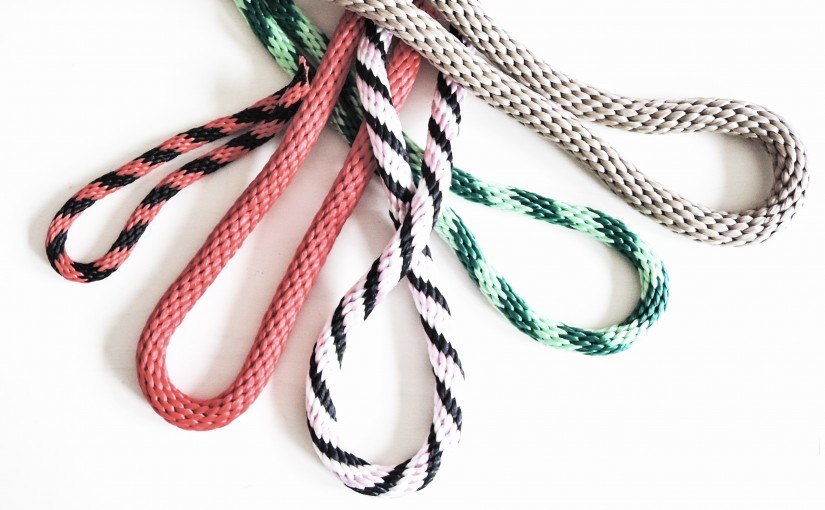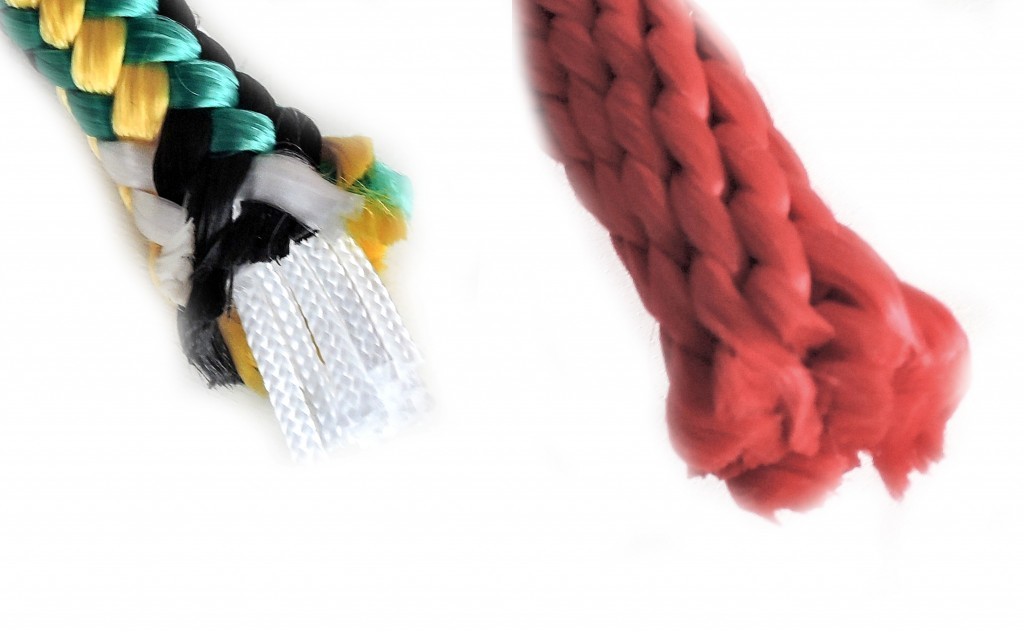Polypropylene ropes are popular for their versatility, cost, strength and color. The ropes are widely used in cynology, water sports (for their ability to float on the water), gardens, boating and yachting. Climbing and safety nets are made from these ropes.
Types polypropylene ropes
1. Braided rope
It is produced mostly by the braiding of 16 or more strands. Strands form on the surface twill or more rarely on the canvas weave. The strands may have a diameter of up to 5 cm. Through a combination of thickness and the number of strands, it is possible to produce an unlimited range of rope diameters. Strands are braided together in one compact piece. The twill pattern of the surface allows a person to produce beautiful color combinations.
2. Coated rope
It consists of two parts, the core and coating. The inner layer is usually made of 12 strands and the coating is formed from 16-36 strands. The core and the coating are often from different materials (e.g. PA / PES). Lesser quality materials are used for the core of the rope. A big disadvantage of these ropes for canine equipment production is that the internal strands (core) extend out from the coating spontaneously. The core and coating are two separate parts which are not mutually connected in any way.
With our varieties of polypropylene ropes, you can choose braided (pictured right) with 18 strands with diameters between 6-18 mm.
Characteristics of polypropylene ropes
• Good chemical resistance to acids, alkalis, oils, organic solvents and alcohols. Animal sweat does not affect their excellent strength properties and color stability.
- High mechanical durability (strength and abrasion resistance) not affected by welding.
- Low density of textile fibers (only 0.91 g / cm³). Ropes made of PP are light enough and float on the surface.
- Easy fusing with a hot air gun, or solder at temperatures at around 165 ° C.
- Moisture resistance.
- Good knot ability.
- They retain their softness even in wet environments.
- They are not prone to static electricity charge.
Table of strengths and use of ropes
| Rope diameter | Strength | Use |
| 6 mm | ca. 180 kg | Leashes for small and medium-sized dog breeds, knotting cords, gardeners, handymen. |
| 8 mm | ca. 340 kg | |
| 10 mm | ca. 515 kg | Harnesses and leashes for large dog breeds. |
| 12 mm | ca. 655 kg | |
| 14 mm | ca. 890 kg | Horse leads, climbing nets and yachting equipment (mooring and anchoring ropes for small boats). |
| 16 mm | ca. 1126 kg |
The strength of ropes were tested on a tensile testing machine. The force required to break the rope was calculated for the rope load in kg.


Pethardware.com
The only shop you’ll ever need for crafting collars and leashes.
Visit Pethardware.com